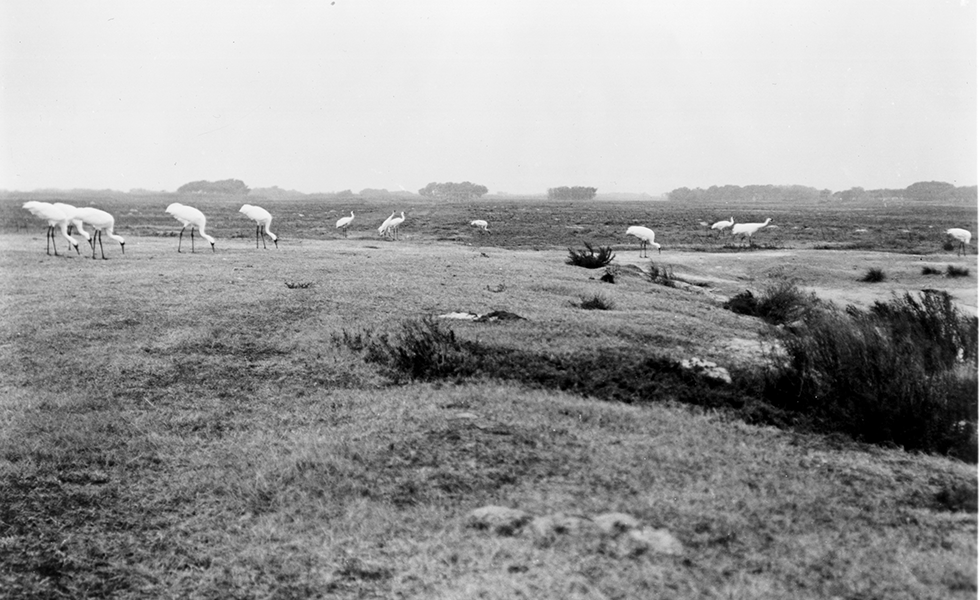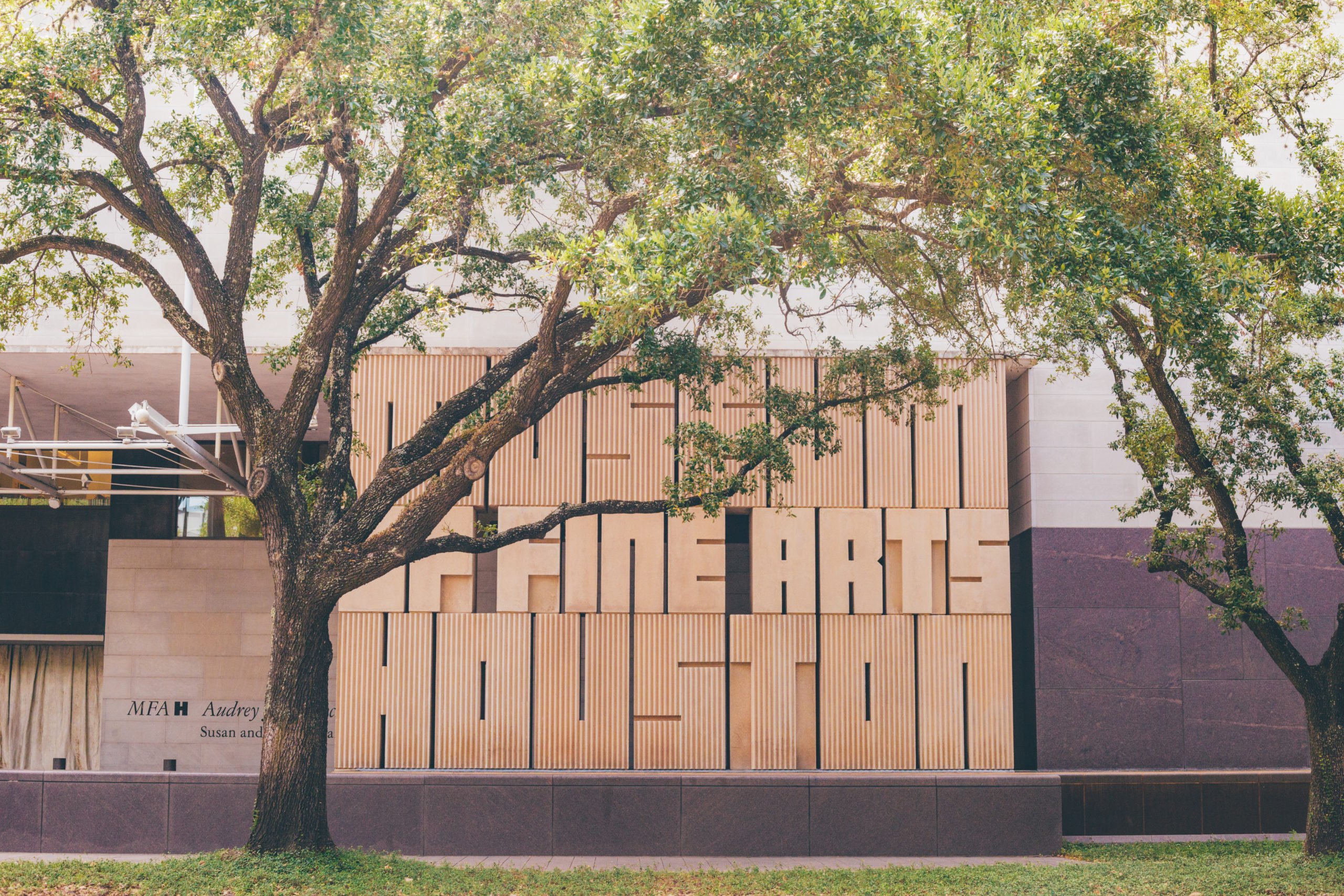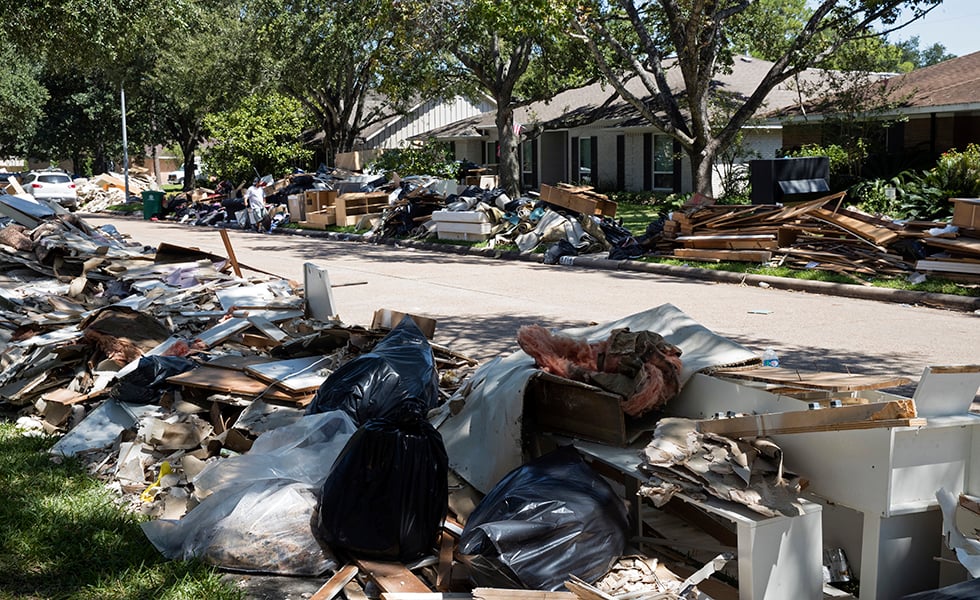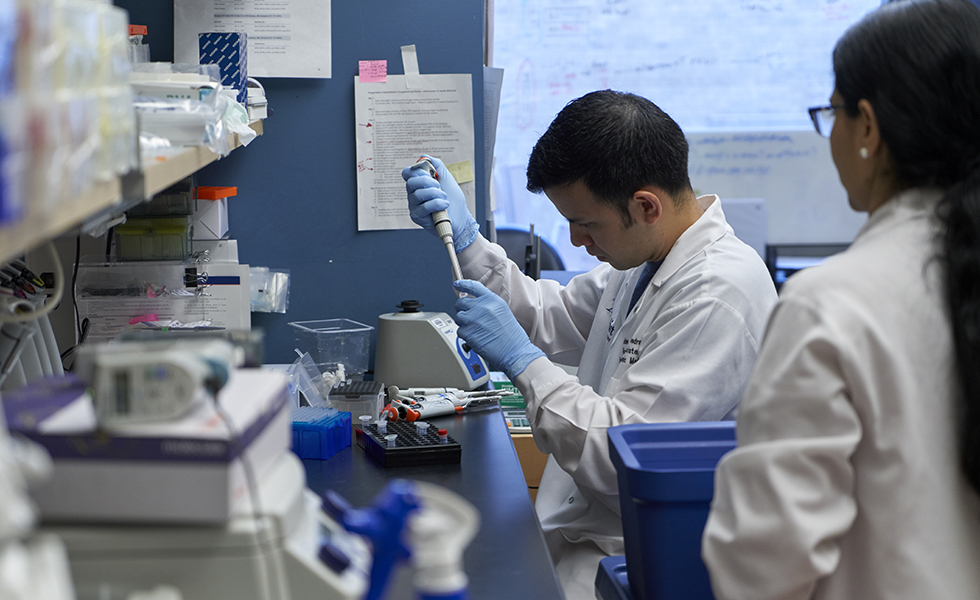
Lessons on the Long Game from Goose Island’s Whooping Cranes
Cranes are survivors. Facing the century’s first global pandemic, they might be the sort of collective totem we need.
Above: Whooping cranes at Aransas National Wildlife Refuge.
Word came on March 10 from my daughter’s Houston middle school: Their spring break learning trips had been canceled. For her 7th grade class, the original plan included a swing up to Dallas to check out the Perot Museum of Nature and Science and the Sixth Floor Museum at Dealey Plaza, followed by a visit to San Antonio’s famed Spanish missions and Market Square. But with coronavirus looming, and the Houston Independent School District veering toward a complete shutdown, school administrators called off the tour. “Worst week ever,” sobbed my daughter, Ursula, a socially-minded 12 year old with a knack for the dramatic.
I didn’t have the heart to tell her things were probably going to get worse from there. That she would likely not see the inside of her classroom again before the end of the semester; or that she might not have a chance to hug her BFFs goodbye for summer; or that her birthday campout—an annual event in its sixth year—was endangered by the fast-spreading COVID-19. Truth be told, I was in a state of denial myself. International headlines declared a public health crisis in Italy, while infection rates crept skyward in Seattle where my in-laws live. Still, rather than focus on the drumbeat of doom, I fixated on whether we had time for our planned quick trip to Colorado to hit the slopes. High in the Rockies, bundled in layers against ice and snow, we would be safe if we kept to ourselves, I figured.
That sense of security also changed in a hurry. On Saturday, March 14, shortly after 10 skiers in Aspen were quarantined, Colorado Governor Jared Polis shut down the ski resorts. Closer to home, on March 6, the Austin’s annual tech-film-music bacchanal South by Southwest had been canceled. A few short days prior to spring break, local officials had a dramatic change of heart and terminated the Houston Livestock Show and Rodeo after a Montgomery County man who attended the barbecue cook-off tested positive for coronavirus. Like that, the new era of social distancing arrived in Texas.
Chastened but not yet panicked, I hatched a new plan to salvage a bit of spring break fun before Ursula’s distance learning launched in earnest: I decided to take her camping. I booked a campsite online for two nights at Goose Island State Park on the tip of Lamar Peninsula, an easy drive.
I fully realize that our concerns, as well as the ability to even execute such a trip, reflect that my family enjoys a place of relative privilege. At the same time, the national outlook in mid-March was still much different than it is today.
Regardless, I want to be clear that our trip was not an exercise in frivolous abandon—the pandemic notwithstanding, I knew time outdoors could help us keep calm and carry on. I was also confident that by putting the largest city in the state in the rearview, we could approximate the same level of physical isolation camping as we could in our southwest Houston neighborhood. So I loaded up my bug-out kit, including a sturdy Kelty tent and a Coleman propane stove. Goose Island sits on the waterfront, and if the fat Gulf Coast mosquitos didn’t carry us away, it was a perfect base for exploring the 115,324-acre Aransas National Wildlife Refuge. With luck we would have no problem spying a few endangered whooping cranes, who spend their winters near Goose Island, an attraction for birdwatchers and other nature lovers.
My desire to commune with the whooping cranes stemmed from a deeply felt, quasi-spiritual compulsion. For tens of thousands of years, these charismatic birds have wintered on the Texas Coast, arriving in November and sticking around until mid-April. Nearly wiped out in the 1940s by hunting and habitat destruction, which dropped their numbers in Texas to just 21, the species has lately rebounded to around 500 birds along the Gulf Coast, nestled among the marshes and barrier islands that extend from Galveston to Corpus Christi. The Texas prairie and agricultural fields of the Panhandle provide additional habitat for huge flocks of sandhill cranes. Another 15 crane species persist worldwide, and in many cultures they are revered as symbols of hope, longevity, and intelligence. In Bhutan, the splendid black-necked crane, the closest known cousin to our own whoopers, is believed to carry ancestral spirits and bring good luck. Facing the century’s first global pandemic, it struck me that the whooping crane might be the sort of collective totem we needed.
Though their populations have stabilized, the whooping crane has faced a long uphill recovery since it was first listed on the federal Endangered Species Act in 1967. For decades, the bird needed to be bred in captivity to supplement the wild flock, which today is increasing at a rate of about 5 percent annually. In 2008, nearly two dozen birds died after the Lower Colorado River Authority stanched the flow of fresh water to Matagorda Bay, leading to lawsuits in 2013 and 2016. (The litigation forced the Texas Commission on Environmental Quality to take the cranes into consideration when issuing water permits for some rivers.) And, despite strong legal protections, hunters still occasionally shoot cranes, both knowingly and unknowingly, including one this past November in the Jefferson Davis Parish of Louisiana. Fortunately, when Hurricane Harvey struck Texas, the cranes escaped unscathed, safe on their breeding grounds in Northern Alberta.
Cranes, in short, are survivors.
After a fitful sleep at our semi-secluded campsite, Ursula and I caught our first glimpse of the whoopers on a private ranchette across the way from the Big Tree, an ancient oak that is one of the Goose Island’s main attractions. Having withstood Harvey without significant damage, the Big Tree is another ecological symbol of endurance, but Ursula was more interested in birding and climbing the neighboring live oaks. As a stiff onshore breeze shook the car, Ursula and I traded binoculars back and forth as we watched an elegant pair flap and preen near a small stock pond. At 5 feet with a 7 foot wingspan, they are the tallest North American bird species. With the wind ruffling their distinctive snowy plumage, they leaped, flapped, and strutted with balletic style.
The late author Peter Matthiessen wrote about the cranes of the world in his 2001 book The Birds of Heaven. In the company of Victor Emmanuel—one of Texas’ leading naturalists—and famed conservationist George Archibald, Matthiessen observed cranes in Europe, Russia, Asia, Africa, and North America. Of the whooping crane, the black-necked crane, and their close ally the Siberian crane, he wrote: “Like emblems of the purity of water, earth, and air that is being lost, the white cranes are dependent on pristine wetlands, and in this they are the most specialized in their subfamily.” You don’t need to be an environmentalist to appreciate that those three ingredients—fresh air, clean water, and open space—are as essential to us as they are to the cranes.
We passed newly planted agricultural fields on the way to the Aransas National Wildlife Refuge, just a half hour east of Goose Island. There were only a few cars in the parking lot, and the visitor center was closed due to COVID-19. As I approached the kiosk to pay the entry fee, I noticed the slot on the “iron ranger” used to collect money was taped over. It’s a way to protect the refuge staff, but I still fretted that public-lands agencies such as U.S. Fish and Wildlife and the National Park Service are being deprived of needed revenue. Ursula and I tried to keep a discrete distance from the other visitors. We spotted a reclusive Wilson’s snipe near Heron Flats and took a lonely hike in the woods. Later, at the end of the new boardwalk that opened this year, Ursula descended a few steps to splash in the water. Then we climbed the observation tower overlooking the lush marshes near San Antonio Bay. We shared the platform with another family, and counted five pairs of cranes feeding avidly, bulking up for their northern spring migration.
On the way back to Goose Island, I detoured to H-E-B in Rockport for some chocolate, crackers, and marshmallows. The gulf breezes and bright sun had lowered my blood pressure considerably from the spikes I felt in Houston, juggling Ursula’s devastation around canceled plans and activities (never mind coping with my own anxiety). I found the sweets in the baking aisle, but surveying the empty shelves—including notes setting hard limits on hand sanitizer and toilet paper—a sinking feeling started to creep back into my heart. We were not such a long way from home, but things were still far from normal. Ursula, at least in that moment, didn’t seem to notice. She talked about the birds, and in a tender moment thanked me for “being the best dad ever” for taking her on our camping adventure.
For us, it was a perfect reset, but I’m not such a romantic that I imagine our visit made an iota of difference to the cranes. As we tallied our bird count, 35 species, and devoured s’mores by the fire, I reflected on the fact that next November, the whooping cranes we saw will return again to the Coastal Bend. By then, maybe coronavirus will be under control and the economy will have recovered. Cranes live a long time; left to their own devices, whoopers can live nearly 30 years. Most of them will see the other side of this.
Among the other birds we counted on our trip was a bald eagle. But in this time of coronavirus, I would argue that rather than the handsome scavenger that adorns our money, we should adopt the resilient, long-lived whooping crane as our emblem of hope. As we traced the coast back to the big city, it was the sort of lesson I hoped Ursula would remember.
Find all of our coronavirus coverage here.
Read more from the Observer:
-
Migrants and Advocates Call to Close Detention Centers as COVID-19 Spreads: A new lawsuit argues that an outbreak in detention could overwhelm local health care systems.
-
As Texans are Exposed to Dangerous Pesticides, Lawmakers Aren’t Doing Anything: Pesticide drift is exposing rural Texans to dangerous chemicals. But lawmakers are more concerned with how that is eating into Big Ag’s balance sheet.
-
The Future of Fair Housing in Texas: John Henneberger has spent 45 years advocating for Texans’ right to have a safe, affordable place to live.


